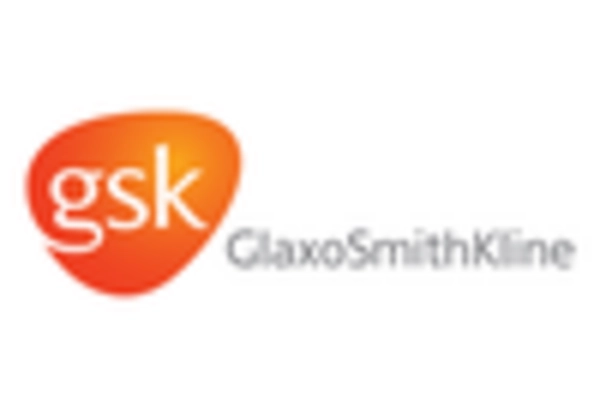Shift Towards Self-Medication
There is a notable shift towards self-medication among consumers, which significantly influences the Medicated Pain-Relieving Plasters Market. Individuals are increasingly opting for over-the-counter solutions for pain relief, driven by the desire for convenience and immediate results. This trend is particularly evident in urban areas where busy lifestyles leave little time for medical consultations. The ease of application and targeted relief offered by medicated plasters appeals to consumers seeking quick solutions. Market data indicates that the self-medication segment is expanding, with a projected growth rate of approximately 7% annually. This shift is likely to bolster the demand for medicated plasters as a preferred choice for pain management.
Advancements in Product Formulation
Technological advancements in product formulation are playing a crucial role in shaping the Medicated Pain-Relieving Plasters Market. Manufacturers are increasingly focusing on developing plasters that incorporate advanced ingredients, such as herbal extracts and transdermal delivery systems, which enhance efficacy and user experience. These innovations not only improve pain relief but also reduce side effects associated with traditional medications. Market Research Future indicates that products with enhanced formulations are gaining traction among consumers, leading to a competitive edge for manufacturers. As the industry evolves, the emphasis on research and development is likely to drive further growth in the Medicated Pain-Relieving Plasters Market.
Rising Awareness of Pain Management Options
The growing awareness regarding various pain management options is a significant factor propelling the Medicated Pain-Relieving Plasters Market. Educational campaigns by healthcare organizations and the proliferation of information through digital platforms have empowered consumers to explore alternative pain relief methods. This heightened awareness is likely to lead to increased adoption of medicated plasters, as they are perceived as effective and user-friendly. Furthermore, the market is witnessing a surge in innovative products that cater to specific pain types, enhancing consumer interest. As awareness continues to rise, the Medicated Pain-Relieving Plasters Market is expected to experience robust growth.
Increasing Prevalence of Chronic Pain Conditions
The rising incidence of chronic pain conditions, such as arthritis and back pain, appears to be a primary driver for the Medicated Pain-Relieving Plasters Market. According to recent health statistics, nearly 20% of adults experience chronic pain, which necessitates effective pain management solutions. This growing patient population is likely to seek alternatives to traditional pain relief methods, thereby increasing the demand for medicated plasters. Furthermore, the aging population, which is more susceptible to chronic ailments, contributes to this trend. As healthcare providers increasingly recommend topical treatments for pain management, the Medicated Pain-Relieving Plasters Market is poised for substantial growth.
Growing Preference for Non-Invasive Treatment Options
The increasing preference for non-invasive treatment options is a significant driver for the Medicated Pain-Relieving Plasters Market. Patients are increasingly seeking alternatives to invasive procedures and pharmaceuticals, which often come with risks and side effects. Medicated plasters offer a non-invasive solution that provides localized pain relief without the need for injections or oral medications. This trend is particularly pronounced among individuals seeking to manage pain associated with sports injuries and musculoskeletal disorders. As awareness of the benefits of non-invasive treatments continues to grow, the Medicated Pain-Relieving Plasters Market is likely to see a corresponding increase in demand.


















Leave a Comment